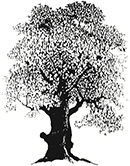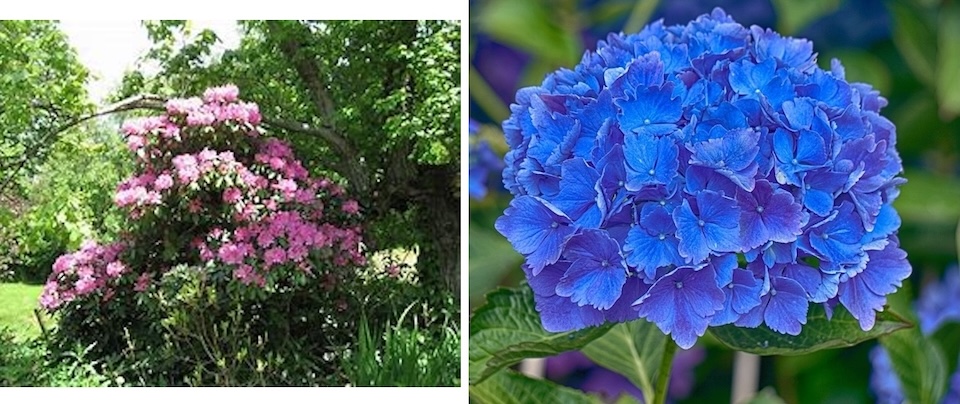MAINE-LY GARDENING: Flowering shrubs for central Maine springtime – part 2
 by Jude Hsiang
by Jude Hsiang
Rhododendrons are popular shrubs that require little care once properly planted and established. They thrive in New England’s acid soil and prefer light shade, conditions many of us can provide. There are over one thousand species and include azaleas. Most are native to Asia, but there are several North American species. As they have a wide range of mature sizes and flower colors, some are evergreen and some deciduous. Some varieties are very fragrant.
Like other shrubs I’m writing about, rhododendrons don’t need much pruning if planted in a spot that allows them to grow naturally. They need good drainage so avoid wet areas. As with any woody plants, the most important things to be aware of when thinking of pruning are broken stems or any stems that cross and rub against each other which can allow disease to enter.
Pruning to control the size is best done in the spring after the flowers fade. This will allow the plant to recover and set new flower buds for the following spring.
If a rhododendron has gotten too large for the space where it was planted or has a neglected appearance it can be pruned in winter when it’s dormant. Just realize that the flower buds might be cut off and you’ll have to wait another year for flowers.
The azaleas are sometimes less tolerant of our cold winters, they can still be a beautiful addition to our gardens. A good nursery or garden center will be able to make suggestions for our area.
Although they won’t bloom until summer, hydrangeas are another group of flowering shrubs to think about now. Unlike rhododendrons, they don’t mind a little wetter spot, but all are deciduous. They also need protection from strong summer sun. Because there are several species with different appearances and needs, there can be confusion about them.
The “big leaf” hydrangeas (Hydrangea macrophylla) are rounded shrubs that often have clusters of blue flowers here in New England. The color is due to our acid soil. Small potted hydrangeas are often sold around Mothers Day in flower color choices ranging from pink to lavender-to-blue according to how it was raised in the nursery. If that small potted plant is then moved outside to the garden, the pink or purple flowers will eventually be blue as the plant adapts to our soil.
To add to the confusion, there are varieties of these hydrangeas that naturally have white, or pink-to-red flowers. And there are “lace cap” types with a mass of tiny flowers surrounded by a border of larger flat blossoms.
All of these big leaf hydrangeas produce their flower buds during the previous year, so if they are pruned in spring all of the flower buds will be lost. If you want to prune, wait until you see the new green leaves and buds appearing on the straight brown stems in the spring. Then it’s safe to cut back a bit or remove old dead stems.
If your yard could use a little color, a rhododendron or hydrangea or two, may be the answer. Of course, there are a lot of other beautiful shrubs to consider.
© Judith Chute Hsiang
Jude Hsiang is a retired Extension Master Gardener instructor and member of the China Community Garden.
Responsible journalism is hard work!
It is also expensive!
If you enjoy reading The Town Line and the good news we bring you each week, would you consider a donation to help us continue the work we’re doing?
The Town Line is a 501(c)(3) nonprofit private foundation, and all donations are tax deductible under the Internal Revenue Service code.
To help, please visit our online donation page or mail a check payable to The Town Line, PO Box 89, South China, ME 04358. Your contribution is appreciated!



Leave a Reply
Want to join the discussion?Feel free to contribute!